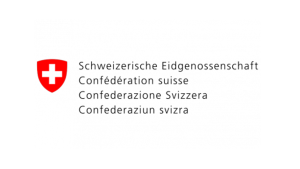The Horizon Europe PEARL project has made significant progress towards the goal of developing the next generation of flexible perovskite solar cells.
Perovskite materials are a popular option for research and development (R&D) activities around the world because they offer material richness, light absorption capacity, and low cost of production. In particular, researchers have been intensely exploring the use of perovskite materials in solar cells to provide a highly efficient and low-cost alternative to silicon cells. However, while perovskite solar cells are reaching the efficiency of silicon cells, stability remains an issue. Additionally, whereas silicon is produced using energy-intensive techniques, perovskites can be processed using low-cost roll-to-roll (R2R) techniques, enabling high-throughput and cost-effective production of flexible and lightweight perovskite solar cells. To address these challenges, the European Union (EU) launched the PEARL project, an innovative initiative aimed at enhancing perovskite solar cells using cutting-edge carbon electrodes.
The mission of the PEARL-Flexible Perovskite Solar Cells with Carbon Electrodes project is to significantly improve the efficiency, stability and cost-effectiveness of perovskite solar cells, with the goal of achieving efficiencies of more than 25% and significant production cost reductions. Funded through the Horizon Europe program, PEARL focuses on advancing perovskite solar cell technology by incorporating carbon electrodes into perovskite solar cell architectures.
project partner
The project consortium consists of 10 European partners working on the development of flexible perovskite solar cells using a scalable and environmentally friendly method with industrial applications. The partners represent two universities: the University of Rome Tor Vergata and the University of Applied Sciences of Northwestern Switzerland. five research and technology organizations (VTT Technology Research Center of Finland Limited, Netherlands Organization for Applied Scientific Research TNO, Helmholtz Center for Materials and Energy, Fraunhofer FEP, and Catalunya Institute of Chemistry); two small and medium-sized enterprises (Dycotec Materials Ltd and Saule Spółka Akcyjna); and one large company (Eni SpA).
Each partner plays an important role in the project. The University of Rome Tor Vergata, in collaboration with Fraunhofer FEP, the Catalan Institute of Chemistry (ICIQ-CERCA) and the Helmholtz Center for Materials and Energy (HZB), is developing highly efficient flexible cells and modules using small-area deposition technology. The university is also optimizing module design to reduce cell-to-module losses. Another university partner, the University of Applied Sciences Northwestern Switzerland (FHNW), performs life cycle analysis (LCA) and develops recycling scenarios for photovoltaic (PV) devices and materials.
HZB is responsible for the development of stable and high-performance perovskite cells and is studying their degradation mechanisms in detail. ICIQ-CERCA designs and synthesizes stable charge transport materials for device applications.
The perovskite materials and cell structures are processed into modules by upscaling partners TNO and VTT on functional substrates provided by Fraunhofer FEP. TNO and VTT will use pilot-scale infrastructure (Solliance, PrintoCent) to manufacture perovskite solar cells and modules in high-throughput roll-to-roll (R2R) technology, and Fraunhofer FEP will utilize R2R vacuum-based coating infrastructure to manufacture flexible transparent electrodes and barrier foils. HZB, FHNW, TNO and Eni also use their facilities to perform thorough stability testing under both indoor and outdoor conditions.
Dycotec Materials provides and develops carbon inks, barrier adhesives for encapsulation, and anti-reflective coatings. Energy company Eni utilizes both indoor and outdoor test facilities to assess the energy yield of its PEARL flexible perovskite modules and uses its facilities to study the module’s power production.
big progress
Now reaching the halfway point of the three-year project, the PEARL consortium has made decisive progress toward its goal of 25% efficient, low-cost flexible perovskite solar cells with carbon electrodes. By combining cutting-edge materials research, pilot-scale roll-to-roll manufacturing, and comprehensive sustainability measures, the partners have achieved a series of significant results.
Collectively, researchers have successfully developed solar cells with an efficiency of more than 21% on flexible PET substrates. The project partners’ most significant accomplishments include:
ICIQ achieved a power conversion efficiency of 21.6% through a special surface treatment (molecular surface passivation with self-assembled materials of fullerenes and silanes). The University of Rome Tor Vergata achieved 17.03% using an environmentally friendly perovskite solvent and an optimized blade coating protocol. Using a new printing process (gravure printing of perovskites with DMSO-based inks), VTT has demonstrated a power conversion efficiency of 14.8% in a lab-scale champion cell. TNO achieved a power conversion efficiency of 9.1% with a perovskite stack fully coated with an R2R slot die.
In addition to these milestones, VTT and TNO scaled up R2R coating, printing, and patterning to larger formats and developed a flexible mini-module with an area of 36cm2 and a power conversion efficiency of 4.5%.
The consortium also developed a protective encapsulation that kept the solar cells stable for more than 2,000 hours under moist heat conditions (temperature of 85 degrees Celsius and humidity of 85%), proving their durability in real-world applications.
Reflecting on these achievements, VTT’s PEARL Project Coordinator Dr. Riikka Suhonen said: “These results put the 25% goal firmly within reach and pave the way for low-cost, high-performance solar modules for applications from building-integrated solar PV to the Internet of Things.”
Sustainability is the focus of the project. Previous initial LCAs have shown that the use of carbon electrodes, recycled PET, and green energy can reduce carbon emissions by more than 50%. Additionally, processes have been developed to recover valuable materials such as lead and cesium from production waste.
What’s next?
As the project moves into its second half, PEARL plans to continue optimizing the roll-to-roll pilot manufacturing process, test larger modules for outdoor use, and publish the results of the life cycle assessment. The goal is to bring flexible solar cells to market for applications such as building-integrated solar power generation and the Internet of Things. Deliverables include an optimized module design report, an R2R encapsulation process, and a pilot-scale production protocol that collectively establishes European leadership in flexible perovskite PV.
This project has received funding from the European Union’s Horizon Europe research and innovation program under grant agreement no. 101122283.

This research was funded by UK Research and Innovation (UKRI) under the UK Government’s Horizon Europe funding guarantee. [grant number 10097706].

This research was funded by the Swiss Cantonal Secretariat for Educational Research and Innovation (SERI).

This article will also be published in the quarterly magazine issue 24.
Source link

